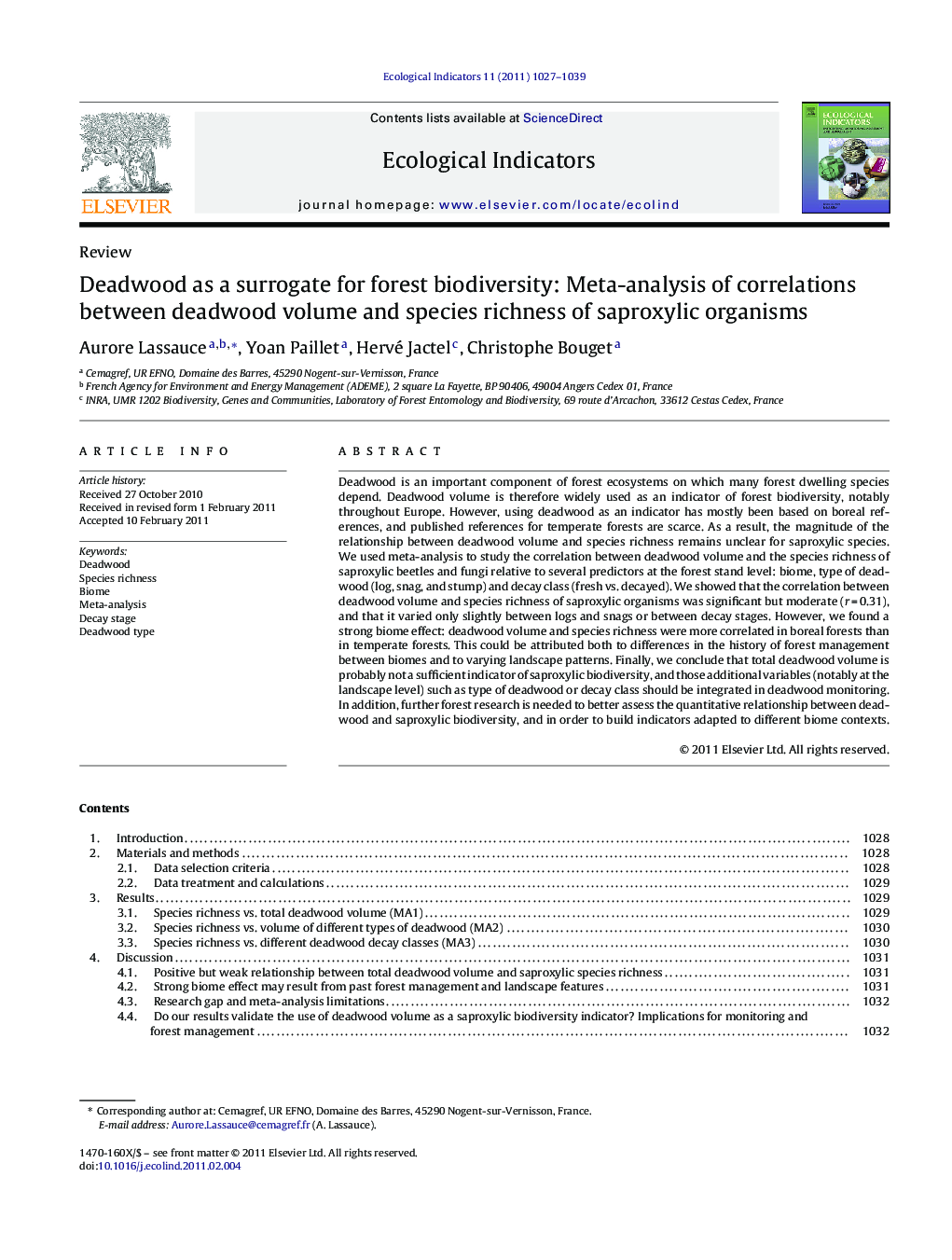| Article ID | Journal | Published Year | Pages | File Type |
|---|---|---|---|---|
| 4374037 | Ecological Indicators | 2011 | 13 Pages |
Deadwood is an important component of forest ecosystems on which many forest dwelling species depend. Deadwood volume is therefore widely used as an indicator of forest biodiversity, notably throughout Europe. However, using deadwood as an indicator has mostly been based on boreal references, and published references for temperate forests are scarce. As a result, the magnitude of the relationship between deadwood volume and species richness remains unclear for saproxylic species. We used meta-analysis to study the correlation between deadwood volume and the species richness of saproxylic beetles and fungi relative to several predictors at the forest stand level: biome, type of deadwood (log, snag, and stump) and decay class (fresh vs. decayed). We showed that the correlation between deadwood volume and species richness of saproxylic organisms was significant but moderate (r = 0.31), and that it varied only slightly between logs and snags or between decay stages. However, we found a strong biome effect: deadwood volume and species richness were more correlated in boreal forests than in temperate forests. This could be attributed both to differences in the history of forest management between biomes and to varying landscape patterns. Finally, we conclude that total deadwood volume is probably not a sufficient indicator of saproxylic biodiversity, and those additional variables (notably at the landscape level) such as type of deadwood or decay class should be integrated in deadwood monitoring. In addition, further forest research is needed to better assess the quantitative relationship between deadwood and saproxylic biodiversity, and in order to build indicators adapted to different biome contexts.
